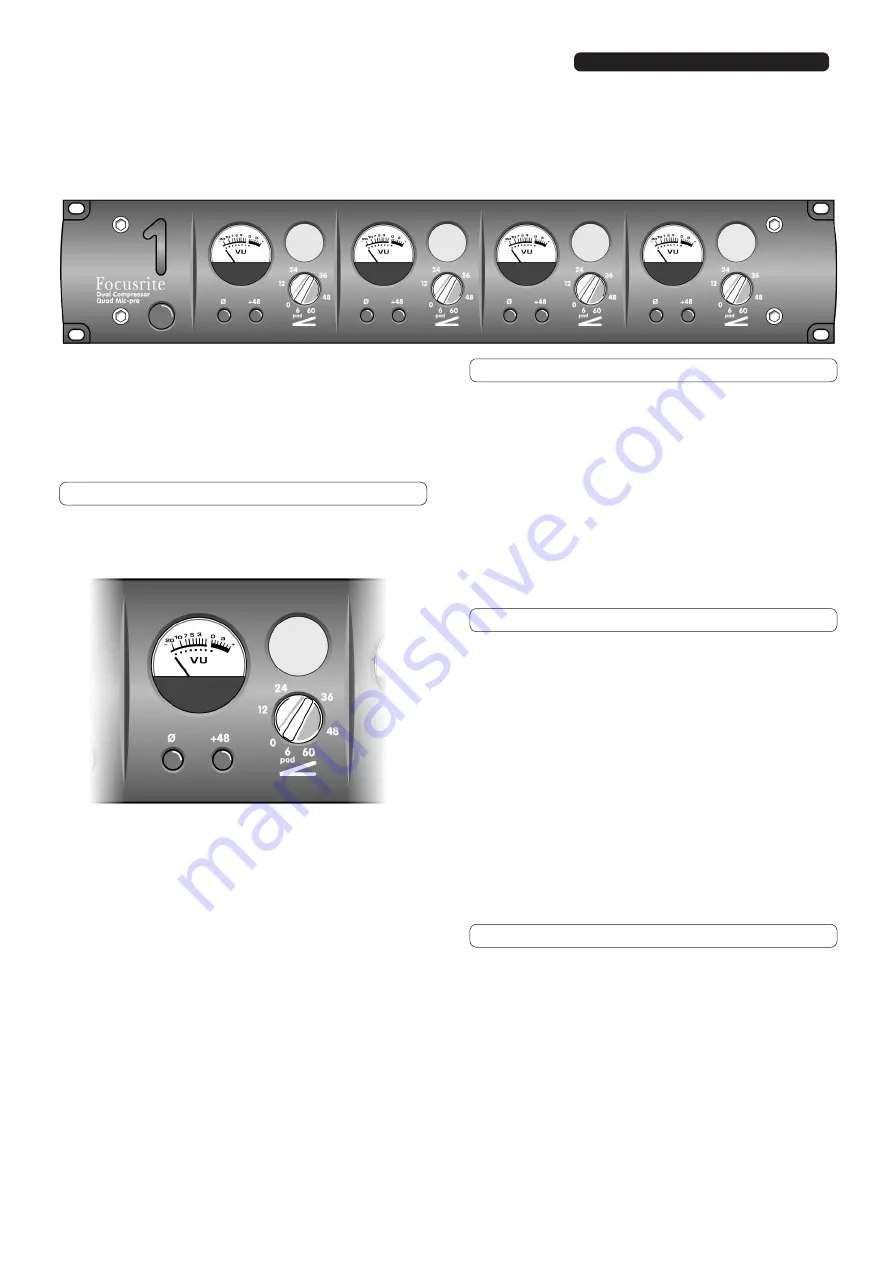
four channel microphone preamplifier
p a g e
5
The Red 1 provides four independent microphone
preamplifiers, each available as a separate channel.
The design of the Red 1 also allows it to be used for
stereo recording - see the section
Recording in Stereo
.
Controls
Each of the four channels on the Red 1 is identical,
and has the controls shown in the diagram.
The gain control is switched, and has 12 positions. The
first position gives -6 dB gain, in other words it
attenuates (reduces the volume of) the signal, and is
for use with microphones that have very high output
levels. Each subsequent position increases the gain by 6
dB, up to a maximum of 60 dB.
Ø is the phase button, and reverses the phase of the
channel when lit.
+48 is the phantom power button. When lit, it provides
phantom power to the microphone connected to the
channel.
Setting the Gain
Use the meter and gain control to match the incoming
level and gain to the internal operating level. With an
input signal coming into the channel, watch the meter
as you use the gain control to modify the gain, and set
the gain control so that the meter registers between -4
VU and 0 VU. This sets the level to give the maximum
signal to noise ratio, whilst leaving room for any
sudden increase in performance level (it gives about 20
dB of usable headroom).
Setting the Phase
When recording a single source using more than one
microphone then you need to ensure that you do not
put your two close microphones out of phase with the
ambient microphone.
If you think two signals are out of phase, listen for
phase as follows:
1. On your monitor system, pan one signal to the left
and the other to the right.
2. Use the phase switch to reverse the phase on one of
the signals. When the two signals are in phase, the
signal sounds bigger
Recording in Stereo
Since the gain controls on the Red 1 are switched,
accuracy between channels is very closely matched.
When recording with a matched pair of stereo
microphones, put them through separate channels of
the Red 1 and set the gain controls for both channels
to the same position.
Red 1
four channel microphone preamplifier
Summary of Contents for Red 1
Page 1: ...Red Range Manual featuring Red 1 3 7 8...
Page 15: ...page 14 notes...


































